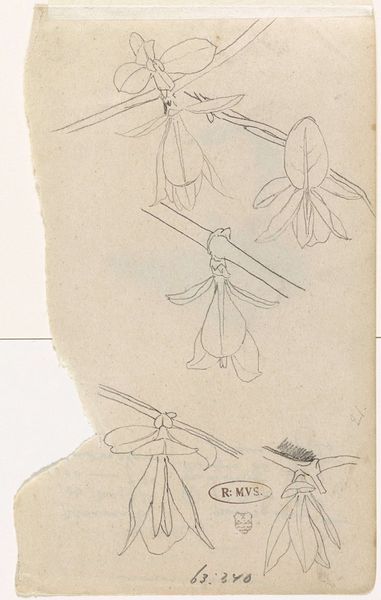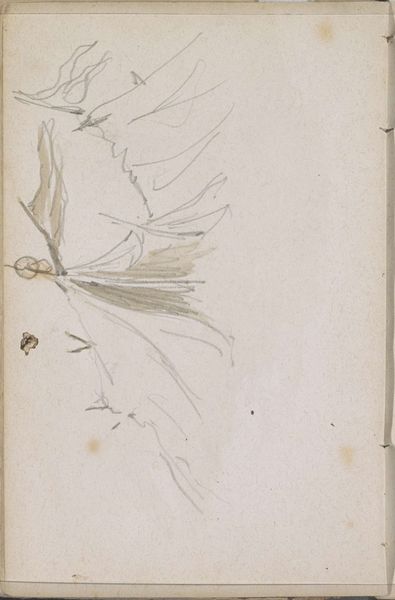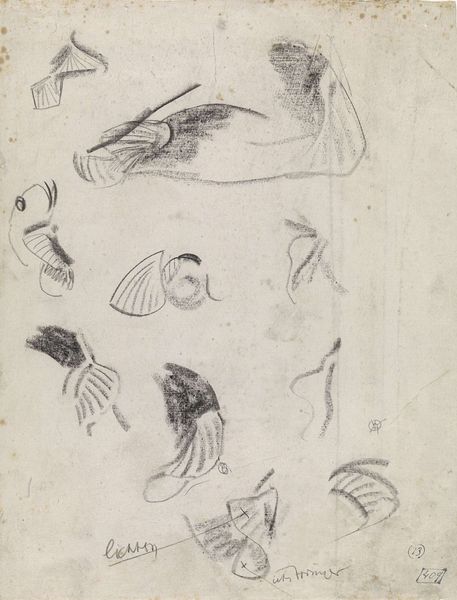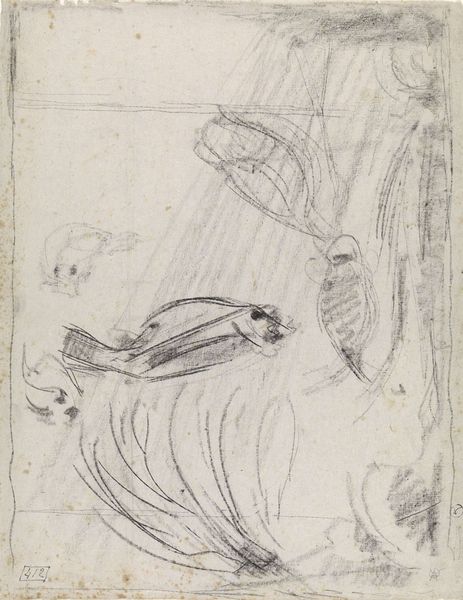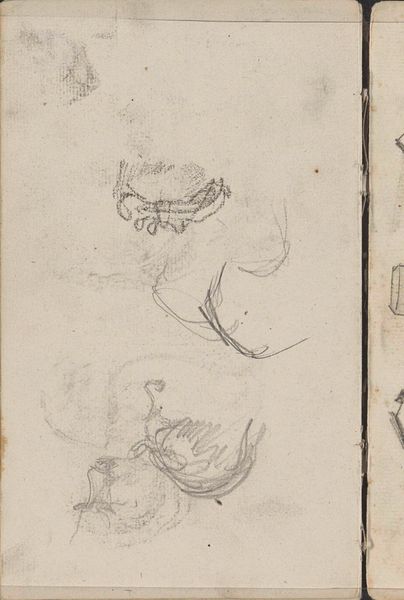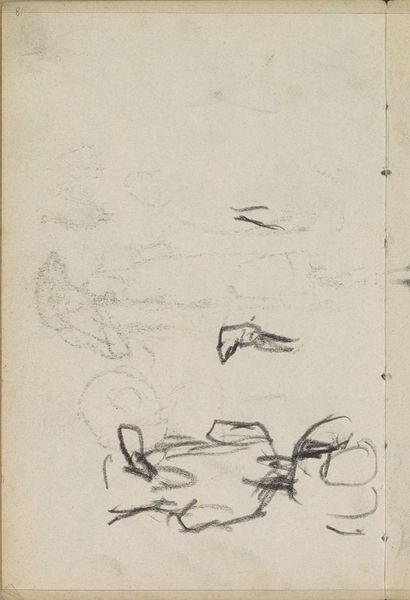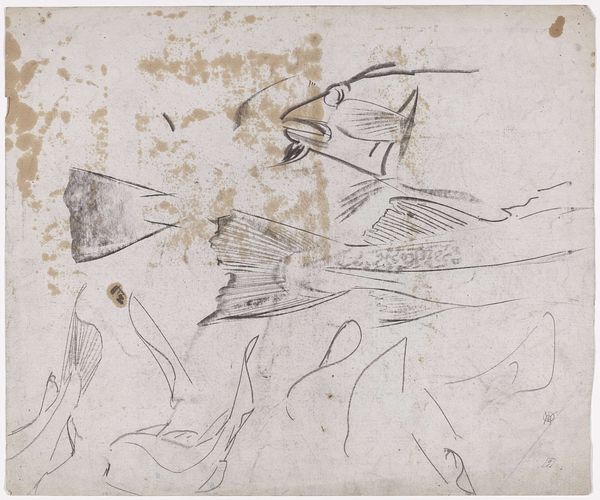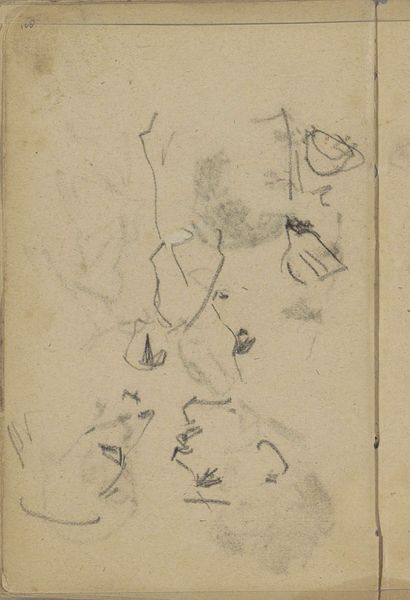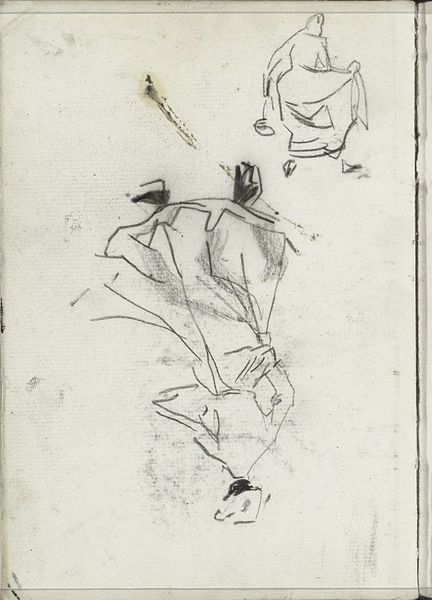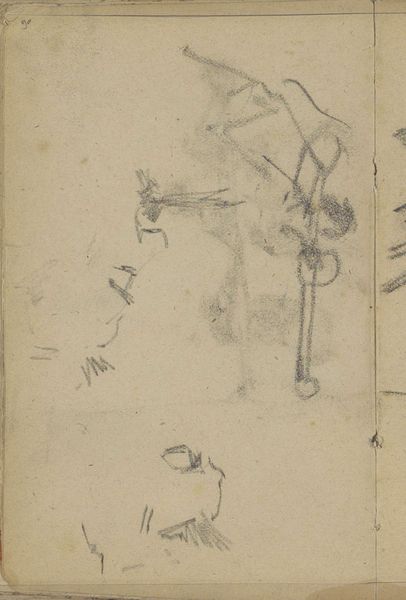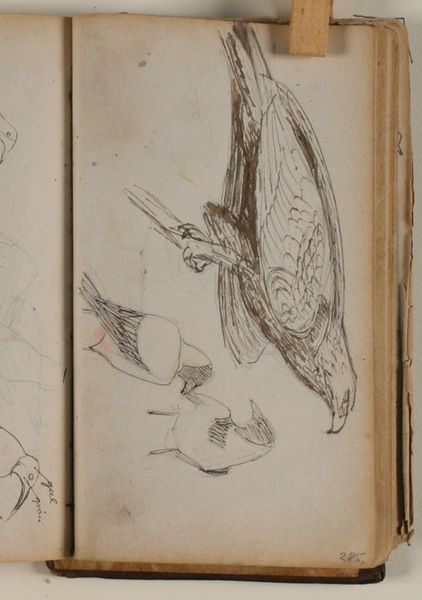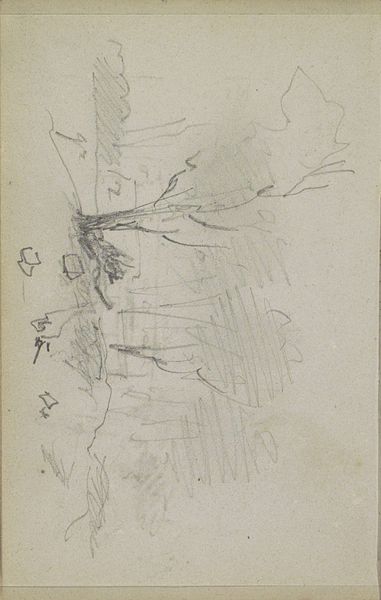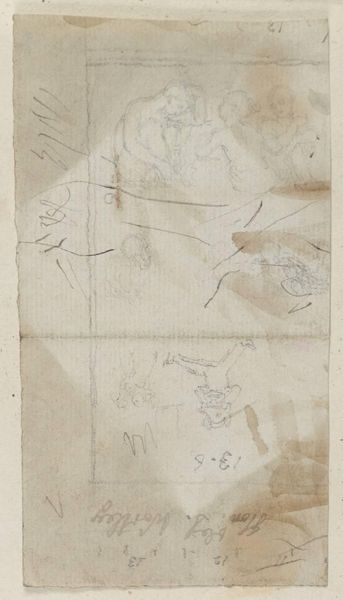
drawing, paper, pencil
#
drawing
#
toned paper
#
light pencil work
#
quirky sketch
#
figuration
#
paper
#
personal sketchbook
#
sketchwork
#
ink drawing experimentation
#
sketch
#
pencil
#
line
#
sketchbook drawing
#
storyboard and sketchbook work
#
naturalism
#
fashion sketch
#
sketchbook art
Dimensions: height 322 mm, width 250 mm
Copyright: Rijks Museum: Open Domain
Curator: Gerrit Willem Dijsselhof’s "Studies van vinnen en een poon," created between 1876 and 1924, is a drawing rendered in pencil on paper. The work currently resides here at the Rijksmuseum. What are your initial impressions? Editor: You know, it's so spare, so delicate. Like capturing a fleeting idea, a half-remembered dream of underwater creatures. It's unfinished, and that's where its power lies. The lines are like whispers of movement. Curator: Precisely! Dijsselhof was part of a generation of artists fascinated by natural forms, and drawings like this reflect the naturalist movement’s emphasis on direct observation. It’s fascinating to see this raw, unfiltered creative process laid bare, especially when much of his later work leaned toward more polished, decorative styles. Editor: Absolutely. You can see him thinking with his pencil, trying to understand how fins move through the water, the texture of the fish…it reminds me of being a kid, constantly drawing and just trying to figure out the world. I bet he used a toned paper in here. Curator: Indeed, that adds depth. These "Studies" weren’t necessarily meant for public display. They offer insight into Dijsselhof's methodology, his dedication to understanding form through repetition and variation. Sketchbooks were central to artistic training and the development of ideas. Editor: Exactly! And that’s what I find so exciting, the chance to peek over his shoulder, see him wrestling with these shapes, like a puzzle he’s determined to solve. This kind of sketchbook art can be so pure and refreshing—no pretension, just raw curiosity. Curator: And it highlights the role of institutions like ours, preserving not just finished masterpieces, but the critical, formative steps in an artist’s journey. It underscores how even seemingly minor works can reveal significant insights into art history. Editor: Totally. For me, it’s about that spark of recognition. We see ourselves in these early explorations, this playful energy, and we’re reminded that art isn’t some lofty, untouchable thing. It’s human. Curator: I agree entirely. It invites us to appreciate the journey, the process, rather than solely focusing on the final product. Editor: Yeah, I'm walking away seeing the beauty of those sketches now in a brand new light!
Comments
No comments
Be the first to comment and join the conversation on the ultimate creative platform.
